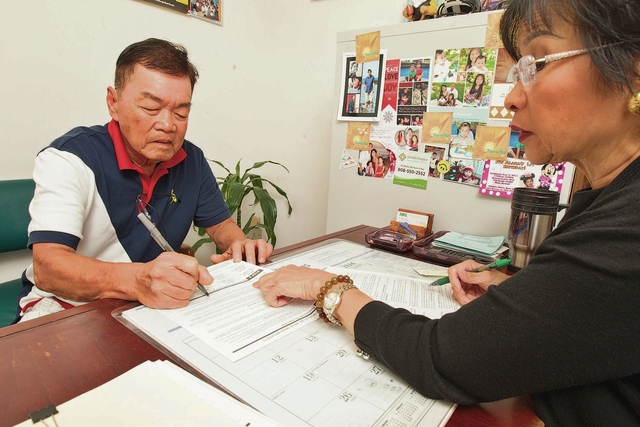Kaiser Permanente Hawaii has stopped accepting new Medicaid patients, making it more difficult for those on the government-backed health insurance program to find doctors willing to admit them.
The state’s largest health maintenance organization — both a medical provider and insurer — serves approximately 31,500 members enrolled in Quest, the state’s version of Medicaid, on Oahu and Maui.
Medicaid is one of Hawaii’s largest government programs, with an annual budget of $2 billion and 345,000 members, but doctors have long complained that Quest doesn’t fully reimburse them for the cost of caring for low-income patients, the aged, blind or disabled.
“If a government payer doesn’t pay enough, people can only take on so many of those patients,” said Kaiser spokeswoman Laura Lott. “We do that for the same reason providers (doctors) do it. A doctor in the community can’t have all Quest patients because they don’t pay him enough per patient.
“It’s part of our mission to improve the health of the communities we serve, and that includes taking care of those who are most vulnerable,” Lott added. “But we couldn’t take every one of them because that’s not sustainable for us.”
To stay in business, providers must strike a balance with higher-paying privately insured patients to offset the lower Medicaid reimbursements. That means new Quest enrollees have difficulty finding primary care providers.
“It’s hard for all patients, even privately insured patients these days, to find a doctor,” said Dr. David
Derauf, executive director of Kokua Kalihi Valley Comprehensive Family Services, a federally qualified health center that serves mostly Medicaid patients. “We have a shortage of primary care physicians, so it’s no surprise to us that people who are on Medicaid … have a much greater challenge getting access to care. It’s hard to recruit and retain capable physicians, so the fact that that Kaiser’s not accepting these people, that will further exacerbate it.”
Emmanuel Kintu, CEO and executive director of Kalihi-
Palama Health Center, said community health centers play a critical role in filling the gaps when other providers simply cannot.
“You will not find a community health center that says, ‘We are not taking additional Quest patients,‘” Kintu said.
Kaiser said it has more than 700 physicians and providers in more than 60 specialties to serve its more than 240,000 members.
“In the Kaiser Permanente integrated model, all our patients are treated equally and receive the same high-quality care (despite lower payments for Quest),” Lott said, adding that existing Kaiser members who switch to Quest can retain their coverage.
Kaiser, rated the top Medicaid plan in the country based on quality and patient satisfaction by the National Committee for Quality Assurance, has closed enrollment before — several years ago, she said.
Kaiser has a limit of 25,000 Medicaid enrollees, but it increased capacity during open enrollment under the federal Affordable Care Act, also known as Obamacare, from November through January, said Keopu Reelitz, spokeswoman for the state Department of Human Services, which administers the Medicaid program. The increased capacity allowed those enrolled in Obama-care who might have had a change in circumstances, and now qualify for Medicaid, to have the option of choosing Kaiser’s Quest plan, she said.
Hawaii Medical Service Association, ‘Ohana Health Plan, UnitedHealthcare Community Plan and AlohaCare also enroll Medicaid recipients.
HMSA said that more than 800 primary care doctors in its network care for Quest patients and that almost 500 of these physicians are accepting new enrollment.
“HMSA and our physician partners agree that it’s important to care for all Hawaii residents, regardless of their financial situation,” said HMSA spokeswoman Elisa Yadao in a statement. “Having a healthy community benefits all of us, and HMSA is committed to doing all we can to make that happen.”
Reelitz said the Department of Human Resources doesn’t track Medicaid doctors.
“We do not currently have information on how many providers accept Medicaid or are open to new Medicaid (patients). We contract with each health plan to ensure enrollees have access to an adequate provider network,” Reelitz said. “It will take us at least a week or two to compile and analyze the information.”
Hawaii needs an additional 450 primary care doctors to meet its residents’ needs, according to the Hawaii/Pacific Basin Area Health Education Center.
“In a perfect world all doctors would take all patients and not have to ask about insurance type,” said Dr. Kelley Withy, director of the center. “Medicaid and MedQuest patients are often the patients with greatest health care needs, and yet reimbursement for caring for them is lower than most other insurances. This makes it very difficult for patients with Medicaid and MedQuest to find providers.”

